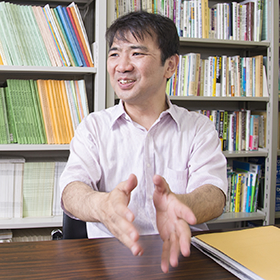
|
| |

|
| |
|
Strategies are needed to revitalize agriculture in rural Japan, which is in
a critical situation.
|
| |
 |
|
Biosphere environmental science is
characterized by three keywords—land, water and humans. Of these
keywords, the Laboratory of Food Production Management specializes
in the field concerned with humans, or the field of social science,
which includes sociology and economics. Professor Hosono has mainly
studied what measures should be taken to promote sustainable
development of agriculture in rural areas.
“My main concern is to revitalize farming communities. Manpower is
essential to keep agriculture alive in rural areas, so I’m mainly
studying what measures should be taken to curb the outflow of labor
and maintain rural farming communities,” said Professor
Hosono.
|
He went on to say, “The ultimate goals of my study are to have residents
in rural areas appreciate the value of their local resources, thereby
enabling them to restore pride in their regions, and to have them use
our strategies to maintain their regions sustainably. I hope that our
study results will be beneficial to farmers in rural areas.”
|
“A key to revitalizing rural areas is
‘endogenous development.’ Local people need to have an attitude of
trying to develop their communities socially and economically on their
own,” said Professor Hosono.
To that end, he emphasized that efforts should be made to encourage
local people to rediscover the attractiveness of their own communities.
After such efforts continue to be made for a certain period of time,
when they start to feel motivated enough to take actions, the next phase
of efforts need to be launched. “The next phase of efforts aims to make
people in urban areas appreciate the attractiveness of rural
communities. One such effort is to promote the ‘Agriculture-related
Activity’.”
The agriculture-related Activity means to process and sell food products
by farmers who produced only agricultural row materials before then. For
example, farmers sell their produce directly to customers at farmers’
markets or serve dishes using their own produce at their own
restaurants.
|
|
|
|
|
Strategies vary according to regional characteristics. Revitalization of
rural communities through workshops is one such strategy.
|
| |
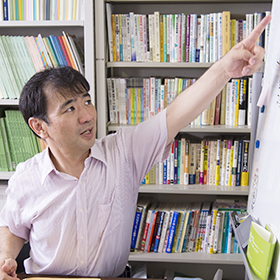 |
|
Recently, he mainly uses workshops held with
farmers to revitalize their communities. Such workshops are held in
places including hilly and mountainous areas, such as Akiota-cho,
Miyoshi City, Sera-cho, and Mitsugi-cho in Onomichi City, as well as
islets such as Osakikamijima-cho, Osakishimojima in Kure City,
Etajima City, Ikuchijima in Onomichi City, and Mukaishima.
Professor Hosono said, “The first step is to introduce to local
residents some examples of successful revitalization projects in
other areas to make them feel motivated. Then the next step is to
hold workshops. Our team participates in the workshops only as a
facilitator, directing the flow of discussions.” According to
Professor Hosono, as discussions proceed, various things happen,
leading to unexpected results that vary among communities.
|
|
“For example, Akiota-cho, a community with the
highest rate of depopulation in Hiroshima Prefecture, has vast
beautiful terraced rice fields. The community can offer traditional
countryside vegetarian dishes using its local rice and other local
produce. These dishes, which are so ordinary to community residents,
can make people living in urban areas feel nostalgic. So, with a
focus on unique characteristics of each community, such as local
specialty dishes, we are making various efforts to enable people in
urban areas to appreciate the attractiveness of rural communities,”
said Professor Hosono.
In many areas, community revitalization projects are conducted
mainly by community farmers’ groups with support from Professor
Hosono’s team. However, in Osakishimojima and Osakikamijima, such
projects are conducted on a community-wide scale with participation
of NPOs, through the tourism organization in Osakishimojima and
through the municipal government in Osakikamijima.
|
|
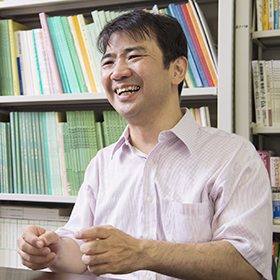
|
| “Osakikamijima-cho has
three workshop groups under the themes: Promotion of ‘I-turn (where an
urban worker moves to the countryside)’ and ‘U-turn (where an urban
worker returns to his or her hometown in the countryside),’ ‘Promotion
of hands-on learning excursions to Osakikamijima-cho,’ and ‘Development
of local specialty products.’ These workshops are beginning to bring
some good results. It’s important to create an atmosphere where local
people want to become actively involved in their community
revitalization projects. My students play important roles in creating
such an atmosphere because they enjoy working on the projects with their
eyes shining, chatting merrily,” said professor Hosono. |
|
| |
|
Seeking to ensure sustainable development of rural areas in Hiroshima
Prefecture and then to establish “inter-local” connections
|
| |
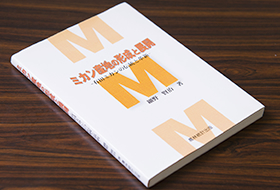
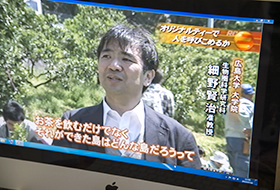 |
|
According to Professor Hosono, more and more
researchers in Japan are engaged in this area of study. The
Laboratory is unique in that students participate in on-site
activities in rural communities with the same perspective as local
people.
Professor Hosono said, “The primary purpose of these revitalization
projects is to contribute to people in rural areas. To that end, my
students are working on the projects with enthusiasm. An increasing
number of students plan to enroll in the Graduate School of
Biosphere Science, and I feel that students are becoming
increasingly aware of the rural depopulation issue.”
Professor Hosono also said, “One of the great joys of this study is
that I can see students growing in person. While interacting with
public service workers engaging enthusiastically in revitalization
projects, more and more students want to become public service
workers like them, who are passionate about what they are
doing.”
Referring to the next stage he will move on
to,
Professor Hosono expressed his aspiration: “I am wondering if we
can help improve the attractiveness of all rural farming
communities by establishing connections among them. I call such
connections ‘inter-local’ connections. I’d like to formulate a
theory on this concept in the future.”
|
In fact, the agriculture of Hiroshima Prefecture is a microcosm of that
of Japan. Professor Hosono thinks that he may be able to devise
strategies to promote sustainable development of Japanese agriculture
overall by clarifying the agricultural structure in Hiroshima. He also
thinks that “inter-local” connections or mutually beneficial connections
among local communities will play important roles in sustainable
development of Japan’s agriculture. His study is expected to bring great
results in the future. |
| |
|
| |
| Kenji Hosono |
Professor
Food Production Management
April 1, 1994 – March 31, 1996: Research Assistant in the School of Economics, Kyushu
Kyoritsu University
April 1, 1996 – March 31, 2001: Lecturer in the School of Economics, Kyushu Kyoritsu
University
April 1, 2001 – January 31, 2009: Associate Professor in the School of Economics, Kyushu
Kyoritsu University
February 1, 2009 – March 31, 2019: Associate Professor in the Graduate School of Biosphere
Science, Hiroshima University
April 1, 2019 – May 31, 2020: Associate Professor in the Graduate School of Integrated
Sciences for Life, Hiroshima University
June 1, 2020 – Professor in the Graduate School of Integrated Sciences for Life, Hiroshima
University
Posted on Dec 11, 2013
|
| |




